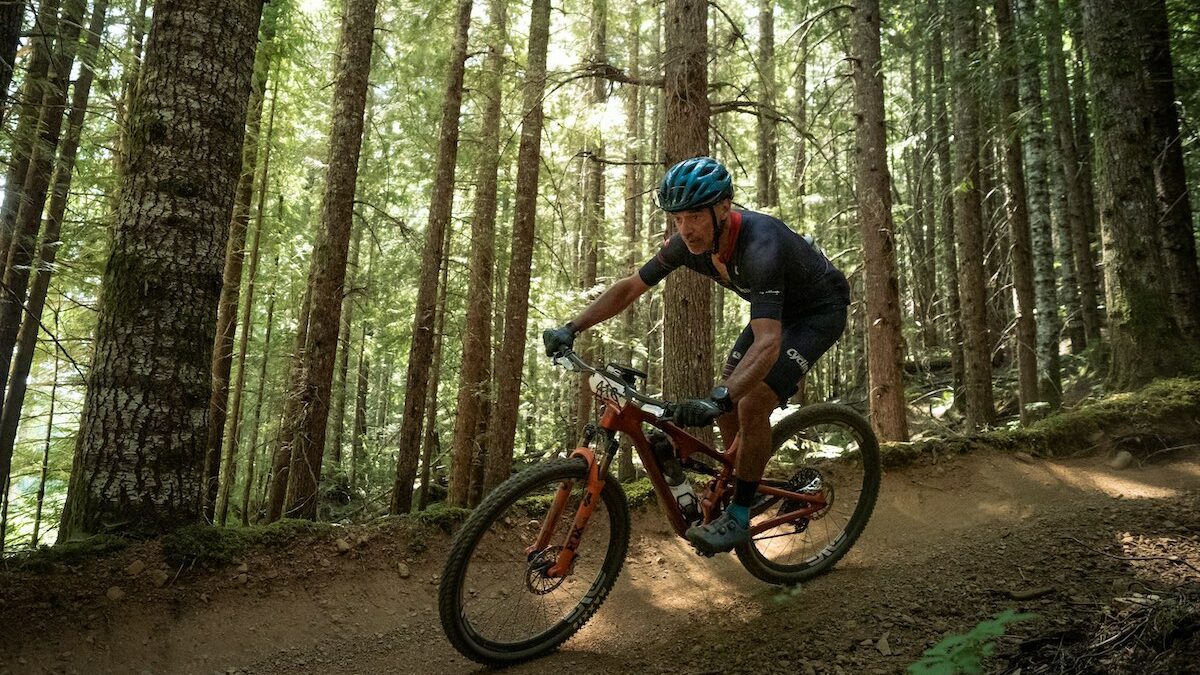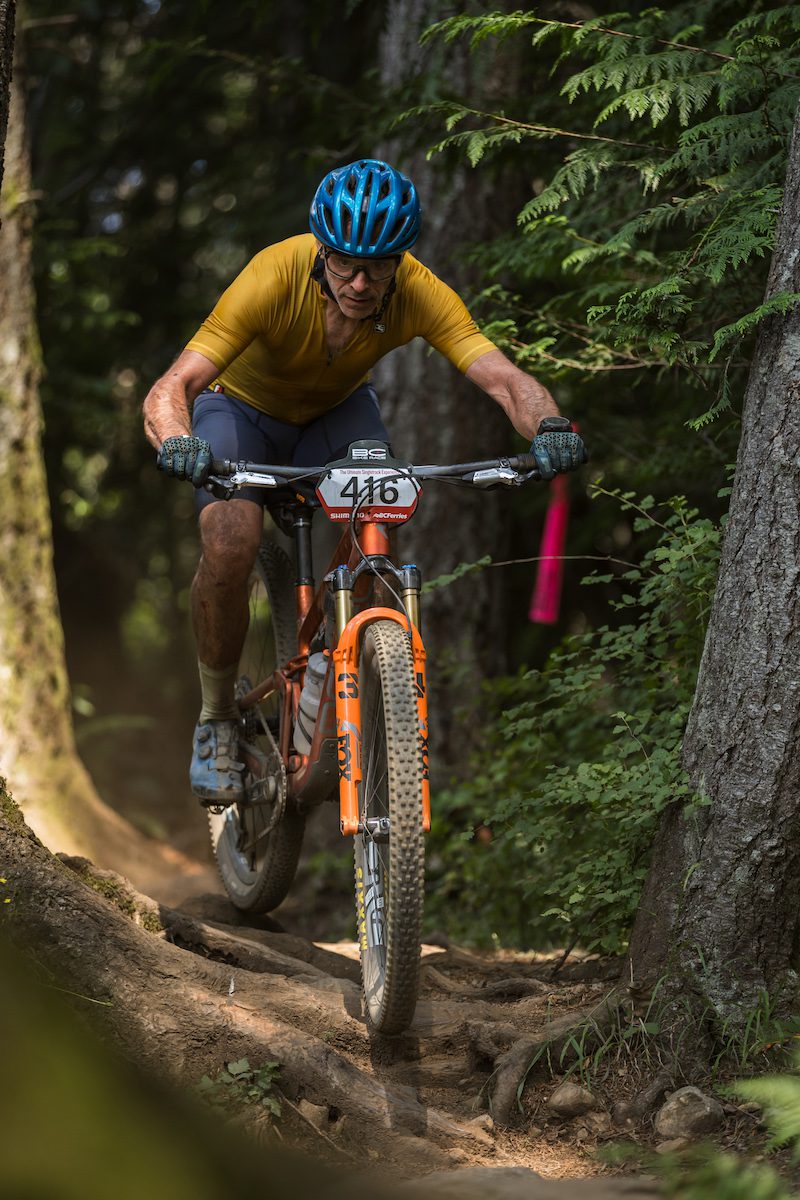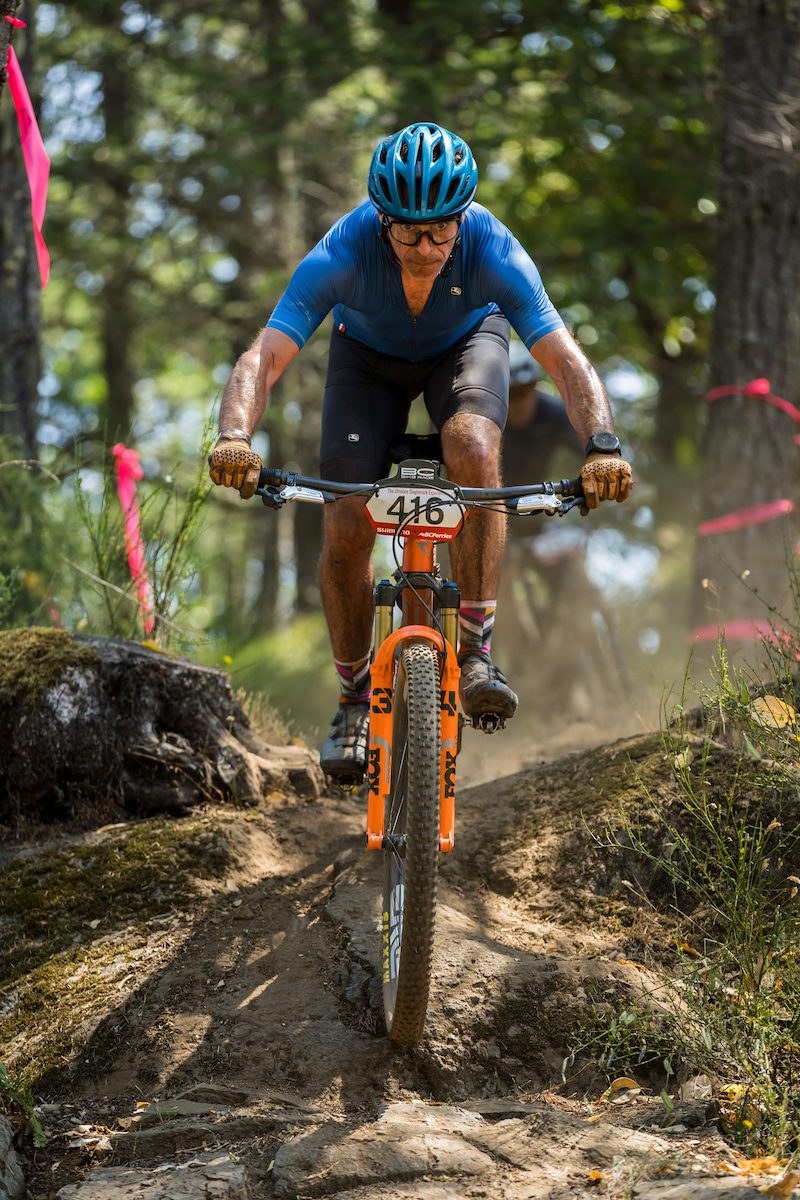From GTA to Vancouver Island: My week at BC Bike Race
Experiencing the Canadian cross country stage race classic

Racers slowly gathered on July 3rd at local ball field in Crofton, B.C.. They register and then choose one of the roomy three-person tents that have been preassembled in neat rows to call home for the next three days. Maple Mountain and Mount Tzouhalem loom above as the anticipation for the 600-plus racers mounts.

Prologue: Testing new dirt
Today things look easy. A short 13.4k time trial, or prologue that people are welcome to jump on as soon as they are ready. For many, this will be the first taste of Vancouver Island trails. Almost 65 per cent of BCBR participants travel from either the U.S. or internationally. In fact, only about 30 per cent of the field have ever done the event before, and most are unlikely to have ridden in this place.
The day and the week will be special, though. The weather is unseasonably hot at 30 degrees and rain has not touched these parts for weeks. This gorgeous weather is a double-edged sword, though. The sun-exposed corners are blown-out dusty messes, with little grip and lots of possibilities for sliding out.
BC Bike Race: The trail up until now
BC Bike Race is a classic mountain bike seven-day stage race with a hefty reputation. European, Israeli, South American, Asian and North American languages and accents punctuate the still night air in basecamp. Most of these participants have known about the race for years, a singular destination in the mountain biking heartland.
Andres Hestler, or Dre to everyone at the event, co-founded BC Bike Race in 2009 with Dean Payne. “The idea behind the race is that people from around the world want to ride the BC trails,” Dre explains. “So we are giving them an event that allows them to ride without trail finding, to eat and sleep without having to organize it on their own and generally create a community where you can meet others with similar stoke.”

Finding footing on technical B.C. trails
The prologue proved short, 30 minutes for the pros and between 30 and 60 minutes for the rest. But the climbing and descending allowed everyone to test out their legs and equipment. For this race, I have a new second-generation Revel Ranger, with SRAM Transmission GX, Enve M5 wheels, Fox 34 StepCast fork and Fox’s new Float SL shock, and bars/stem and dropper from FSA. The bike looks sharp and I am hopeful that it will ride the fine line between aggressive downcountry descending and XC climbing. On the first trail the climbing was fine and the descending not so good, but perhaps it is the rider and not the equipment. The day ends early as tomorrow is the first real stage and most still don’t know what to expect.
The second day and second stage is warm and sunny at first, winding across a farmer’s field to get to the base of Mount Tzouhalem. But this 40km stage is the first real test, with 1,100 metres of climbing up, across, and back down the mountain. The climb was spectacular but was filled with long lines of racers, snaking their way up the single track. I settled into a rhythm and climbed well below my limit, but enjoyed the scenery.
The top was technical, with lots of sharp steep climbs and steep rock roll descents. The descent off the mountain took in some of the local classics, Double D and Bumble Bee, both blue-rated fast, flowing trails. With day two done and dusted, I felt accomplished, but not exhausted. Getting up and doing it again would not be a problem today, and would not be a problem at all during the week.

A changing race, changing communities
Dre told me the course is designed as predominantly blue trails with some black diamond features. This feels accurate after the seven-day ride, although we found ourselves on at least one double black diamond trail. Earlier editions of BCBR had longer stages, this week the longest is only 45k, but in the past there were many more double track and roads used to connect to all of the good trails. Mountain biking in BC has had a huge growth spurt, with local organizations putting huge efforts into trail development.
Today the town of Cumberland, the second basecamp on the BCBR tour, is fueled almost entirely by the bike market. This little town of less than 4,000 people boasts four bike shops, boutique brand Forbidden Bike Co., NOBL wheels and the bike-themed Riding Fool Hostel. What this kind of development has come to mean is that trails abound, and other than some double track climbs and a few short road sections to get to the start or back to basecamp the vast majority of the racing in Cumberland is on single track.
Cumberland in 2015 had less than 40km of trails, today trail building and maintenance is in part funded by the region. Just Cumberland alone there are over 200k of trails with over 220,000 annual day users. This is a massive change to the region and infrastructure, making things so much easier and better for race organizers.

Settling into the second half of the week
As the race progresses and days get harder, the energy at basecamp wains. Most racers are less chatty in the morning and people go to bed early knowing that wake up is at 5.45 or 6.30. But every day someone watching or playing music at cheer stations would comment that I was still smiling. With racing and riding only 2-4 hours daily I didn’t get bagged, which meant that overall the chances of an accident from fatigue were greatly reduced. Of the seven days only one was the kind of true xc course I was used to. Most days involved long mtb trail and fire road climbs followed by long beautiful often flowy descents.
As the days progressed my descending got faster and better, and probably my risk tolerance also increased. That Revel bike I was sporting handled the descending beautifully and the early deficiency was clearly the rider and not the ride. Hitting jumps, cornering at speed and finding efficient positions on the bike were all made easier and more fun on this bike. While over the years many people have ridden the race on many different bikes, unicycles, gravel bikes, hardtails, everyone that I saw riding anything but a full suspension bike had a lot of problems and ended up trading up for the right rig in order to complete the race.
Challenging bodies, testing bikes
An errant rock cracked one of my seat stays on day two. A moment of fear overtook me, would I be able to complete the race on this bike, or might I have to go home. Fortunately, the bike shop Obsession (which follows the race and charges an hourly rate at this event significantly higher than my car mechanic or my local bike shop but also work through the night to get racer’s bikes ready for the next morning) were able to epoxy and carbon tape the bike, and it continued to ride beautifully.
BC Bike Race was one of the great joys I have experienced in cycling. But this is not a beginner’s event. You need some technical competence not to hurt yourself and to get through the ride happily. While this is a race and you can aim for overall all, age group, teams, and other category podiums, it can also just be an awesome ride.
